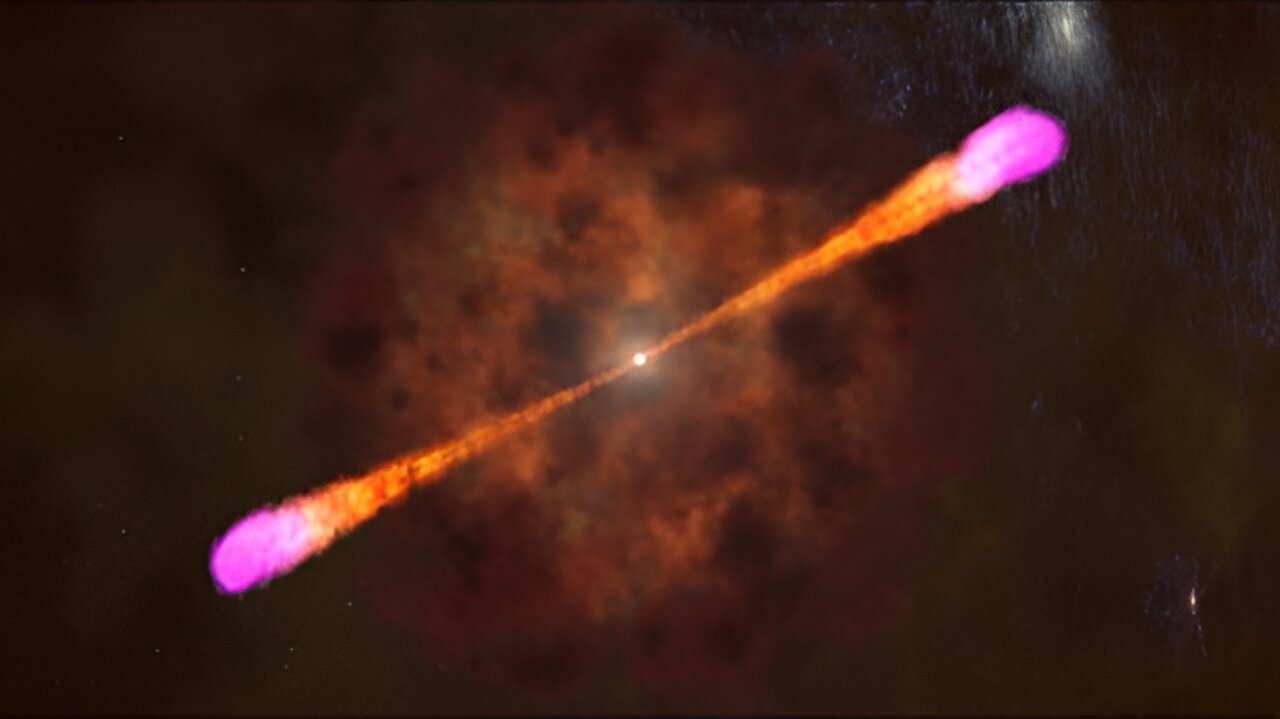Scientists are trying to figure out where the radiation of gamma-ray bursts comes from. It lasts only a few seconds, but during this time more energy is emitted than the Sun can generate in 10 billion years.

Mysterious gamma-ray bursts
Gamma-ray bursts (GRBs) are powerful bursts of gamma radiation that usually generate more energy in a few seconds than the Sun produces in its ten-billion-year life. These transient phenomena have been one of the biggest mysteries in astrophysics since the accidental discovery in 1967 by a nuclear observation satellite.
“Despite being studied for over fifty years, the mechanisms by which GRBs produce light are still unknown, a great mystery of modern astrophysics,” explains Jon Hakkila, lead author of the study. “Understanding GRBs helps us understand some of the most rapid and powerful light-producing mechanisms that Nature employs. GRBs are so bright, they can be seen over the breadth of the universe, and—because light travels at a finite velocity—they allow us to see back to the earliest times that stars existed.”
One of the reasons that this mystery still remains unsolved is the inability of theoretical models to provide a consistent explanation of the characteristics of gamma-ray bursts and their behavior on the light curve. In astronomy, this is what the graph of the dependence of the light intensity of a celestial object on time is called. Their study can provide important information about the physical processes that are behind various cosmic events, as well as help in forming theoretical ideas about their nature.
However, this process is greatly hindered by the fact that there are no two identical light curves of gamma-ray bursts, and the duration of radiation can vary from milliseconds to tens of minutes in the form of a series of energetic pulses.
Gamma-ray burst pulses
Pulses are the basic units of measurement of GRB emission. They indicate the time when the gamma-ray burst begins and then fades away. At this time, there may be variations in brightness, which can sometimes occur over very short time intervals.
It is very difficult to understand how this can happen, because time moves only in one direction. The mechanism that produces light during a gamma-ray burst somehow produces a brightness pattern, and then subsequently generates the same pattern in reverse. It’s pretty weird, and that makes these events unique. It is believed that gamma radiation occurs in relativistic jets coming from newly formed black holes.
Motion of relativistic jets
“In these models, the core of a dying massive star collapses to form a black hole, and material falling into the black hole is torn apart and redirected outward along two opposing beams, or jets,” Hakkila notes. “The jet material pointing in our direction is ejected outward at nearly the speed of light. Since the GRB is relatively short-lived, it has always been assumed that the jet remains pointing at us throughout the event. But the time-reversed pulse characteristics have been very hard to explain if they originate from within a nonmoving jet.”
In order to solve this problem, scientists have suggested that the jet still moves during the pulse. That is, part of the time it is not aimed directly at us. And this means that its source, whatever it is, must rotate very quickly.
According to phys.org
Follow us on Twitter to get the most interesting space news in time
https://twitter.com/ust_magazine


